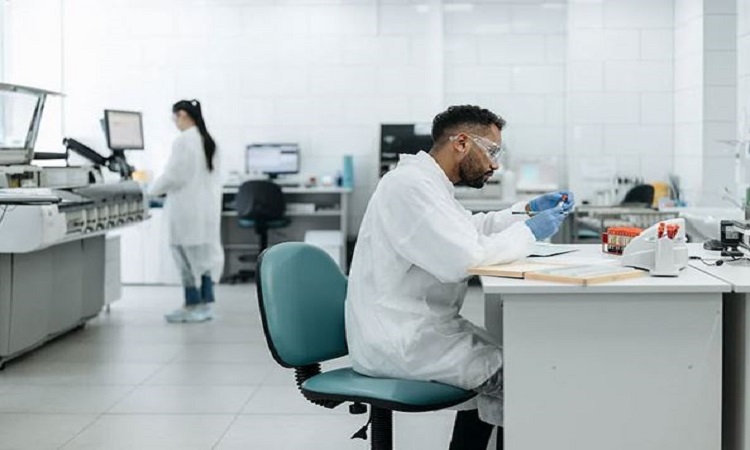
La Jolla: Lung adenocarcinoma is the most common type of lung cancer, accounting for the majority of cancer-related fatalities in the US. There are various causes of lung adenocarcinoma, one of which is a mutation in a protein known as EGFR. Non-mutant EGFR stimulates cell proliferation in response to injury, but mutated EGFR promotes out-of-control growth, which can lead to cancer.
Modern immunotherapies are ineffective against EGFR-driven lung adenocarcinoma, and while certain medications exist to treat the malignancy, patients usually acquire resistance to them within a few years. This gap in the therapy toolkit prompted Salk Institute researchers to look for weak points in the cancer's development process.
Read This Also: Pregnant women should avoid ultraprocessed, fast foods
The researchers discovered that EGFR-driven lung adenocarcinoma hijacks a specialized population of lung-resident immune cells known as macrophages, which are responsible for disposing of diseased and damaged cells as well as maintaining a delicate balance of protective lipids (fats) around lung alveoli, which are required for breathing.
Lung cancer cells recruit macrophages into the tumor microenvironment and modify their lipid metabolism, transforming them into cancer fuel sources. The newly powered tumor cells subsequently stimulate further macrophage growth to provide additional fuel--a novel self-perpetuating cancer strategy.
The findings, published in Cancer Discovery on January 25, 2024, provide new inspiration for lung adenocarcinoma interventions that disrupt this tumor cell-macrophage relationship. The researchers suggest that treatments using EGFR inhibitors may be more successful when paired with statins, a class of drugs commonly used to lower cholesterol levels.
Read This Also: Researchers explain why blueberries are blue
"We have discovered a novel way that lung cancer cells manipulate their local environment and other cell types surrounding them to promote their own growth. In this case, the tumor cells exploit lung-resident macrophages--remodeling them to provide nutrients, like cholesterol, to the cancer cells and stimulate tumor growth," says senior and co-corresponding author Susan Kaech, professor, director of the NOMIS Center for Immunobiology and Microbial Pathogenesis, and holder of the NOMIS Chair at Salk. "One exciting implication of this work is that lung cancer treatments may be improved by simply adding statins, an already widely used class of drugs, to the patient's treatment plan."
Lungs rely on tiny bulbs called alveoli, which expand and deflate with our breath, to facilitate the exchange of oxygen and carbon dioxide between the air and our blood. Alveoli are crucial to human survival, and their health is dependent on a lipid-rich environment created by alveolar cells and sustained by macrophages.
Lipids, such as cholesterol, are fatty compounds that support bodily function by helping cells move, store energy, and absorb vitamins.
This unique ability of lung-resident macrophages to maintain lipid balance becomes more complicated when tumor cells begin to exploit those lipids to help themselves grow.
A better understanding of the mechanisms macrophages use to regulate their metabolism and lipid production can provide insight into how tumor cells selfishly manipulate those mechanisms to help themselves.
"The tumor cells excrete even more of a growth factor called GM-CSF (granulocyte macrophage colony-stimulating factor), which then causes the macrophages to grow alongside them and change their metabolism, resulting in excess lipids that the tumor cells use to strengthen themselves," says first author Alexandra Kuhlmann-Hogan, former postdoctoral researcher in Kaech's lab and current postdoctoral researcher at UC Los Angeles. "The cancer was effectively hijacking this normal macrophage process of maintaining the lungs with healthy lipids in order to fuel itself."
"Not only were the tumor cells metabolically reprogramming the macrophages--they were also instigating a feedback loop that encouraged an optimal metabolic state in the tumor cells themselves," said co-corresponding author Katerina Politi, scientific director of the Center for Thoracic Cancers at Yale Cancer Center and professor of pathology at Yale School of Medicine.
When the EGFR-driven lung adenocarcinoma cells secreted GM-CSF, it stimulated a gene in the macrophages called PPARg (peroxisome proliferator-activated receptor gamma), which jump-started their metabolic reprogramming and subsequent secretion of lipids.
In addition to using these macrophage-curated lipids to grow, the tumor cells also use the lipids to power the continued activation of the EGFR-drive that helps the cancer grow.
Kaech predicts that disrupting this loop could be a novel intervention for slowing down EGFR-driven cancer growth. Exactly how the delivery of lipids like cholesterol to tumor cells powers the EGFR oncogenic pathway, the researchers aren't yet sure.
"Our results reveal new therapeutic possibilities for immunotherapy-resistant EGFR-driven lung adenocarcinomas," said co-corresponding author Christian Metallo, professor and holder of the Daniel and Martina Lewis Chair at Salk. "We have identified a key metabolic relationship between macrophages and alveoli that is exploited by tumor cells to support the cancer's metabolic demands--now we just have to disrupt that exploitation." (ANI)







